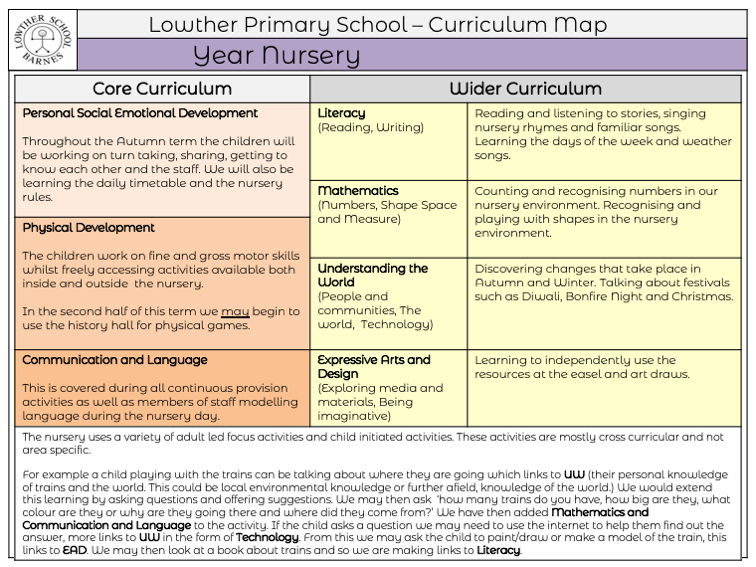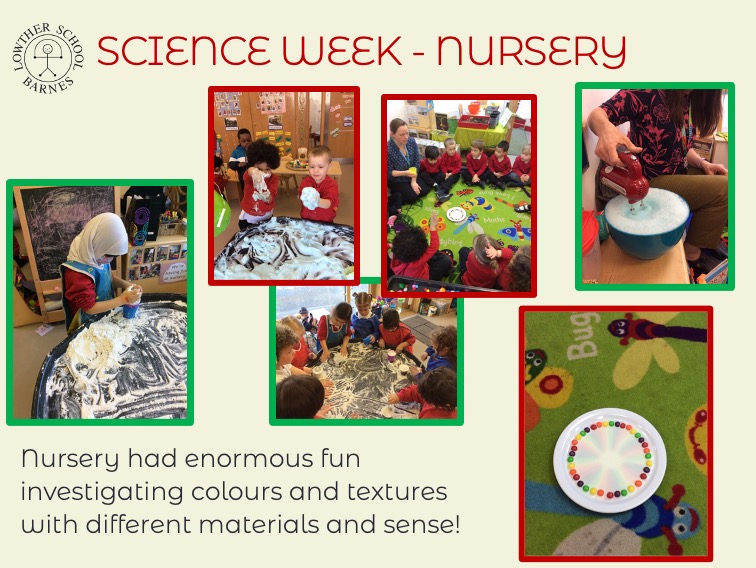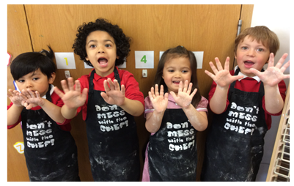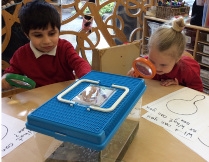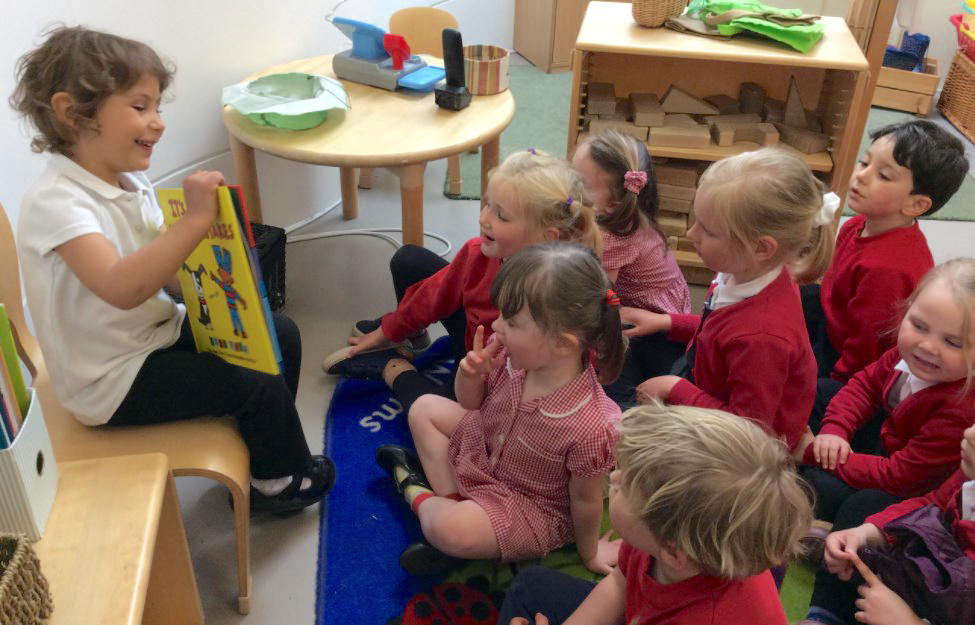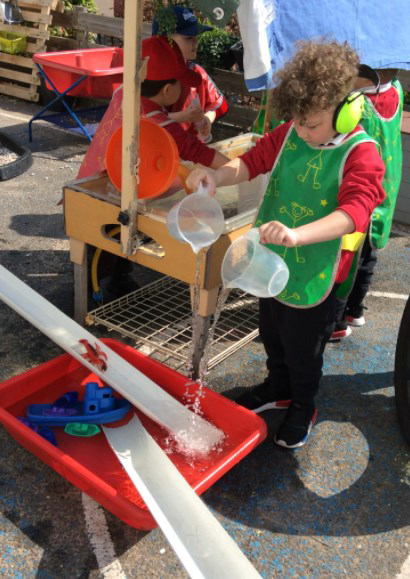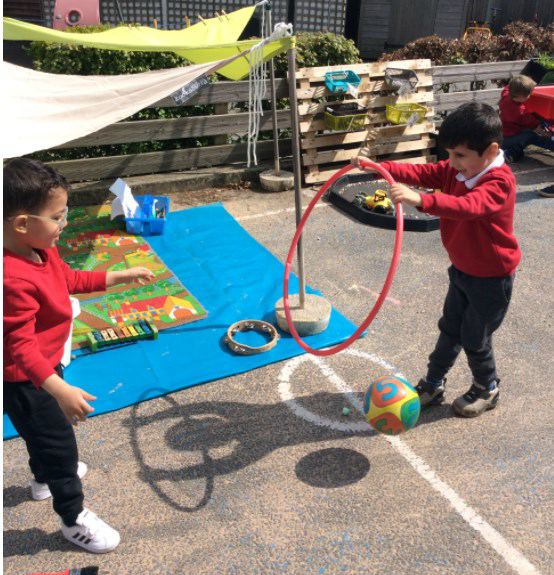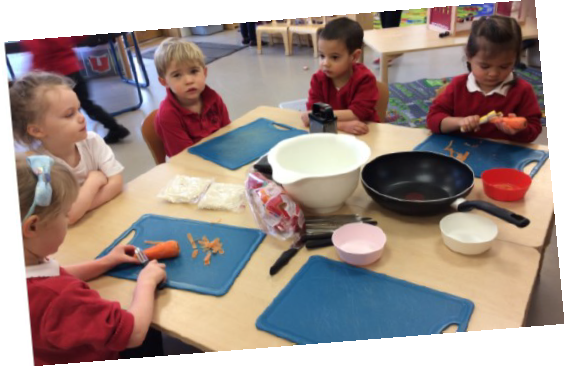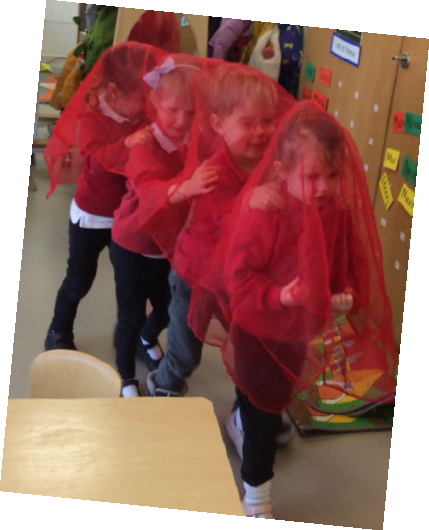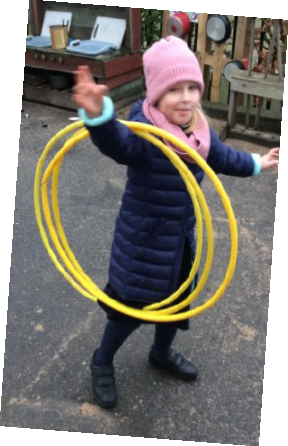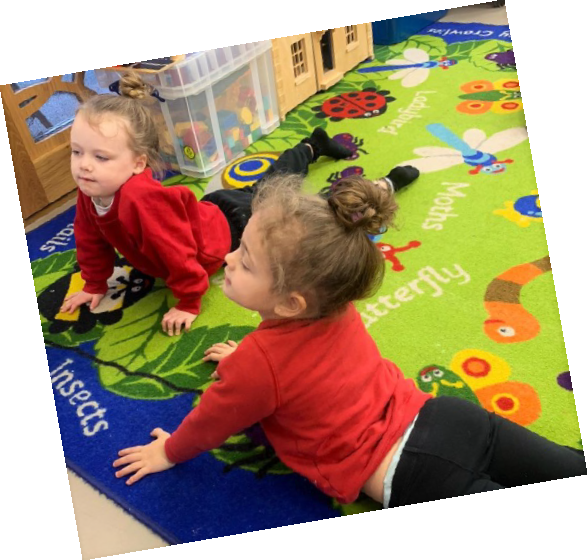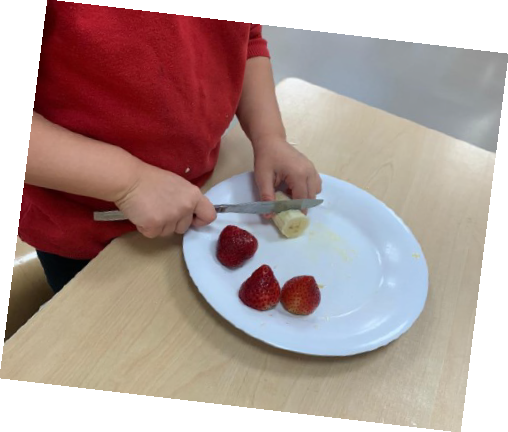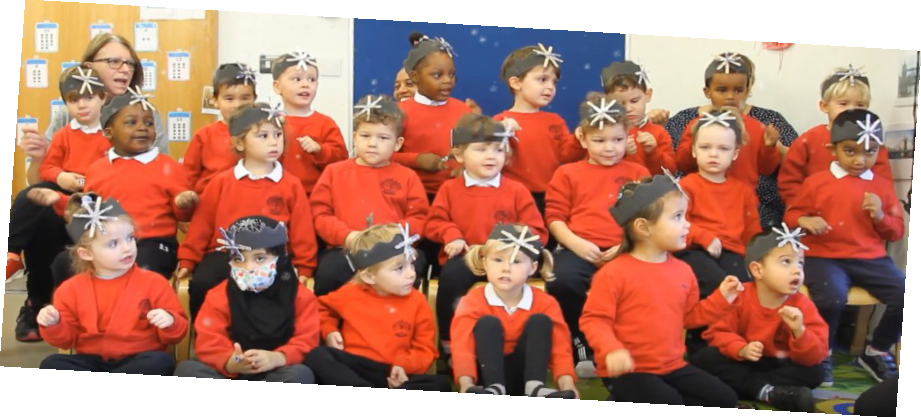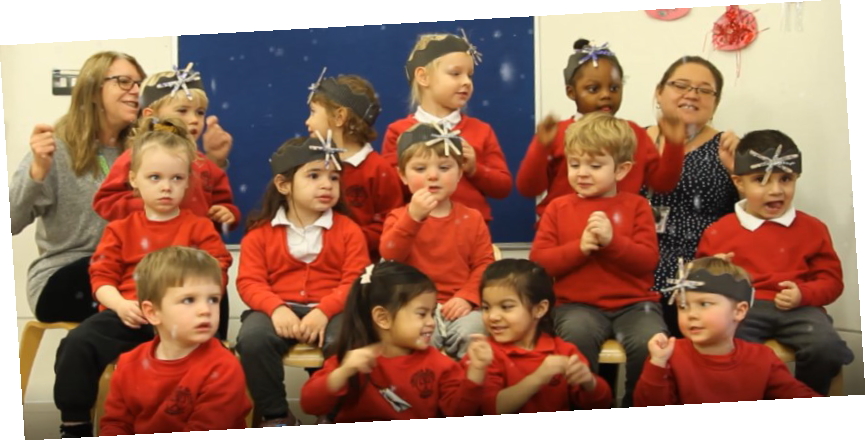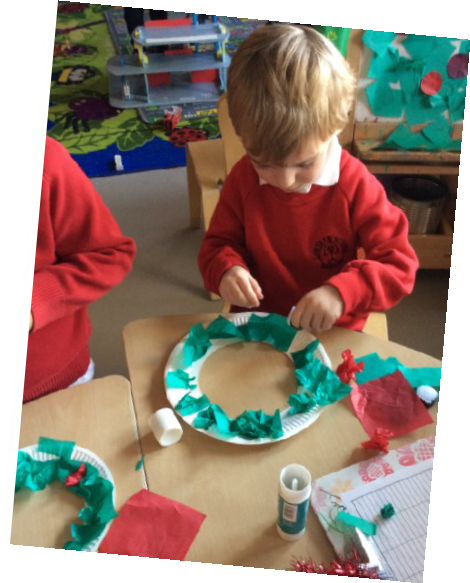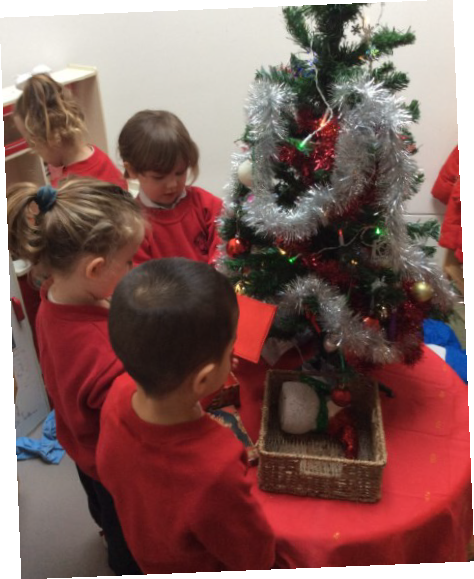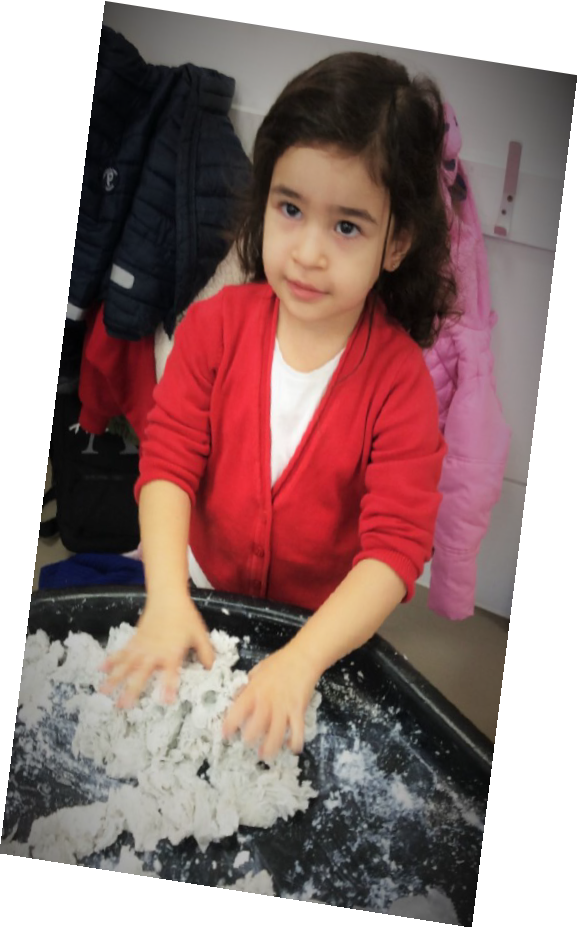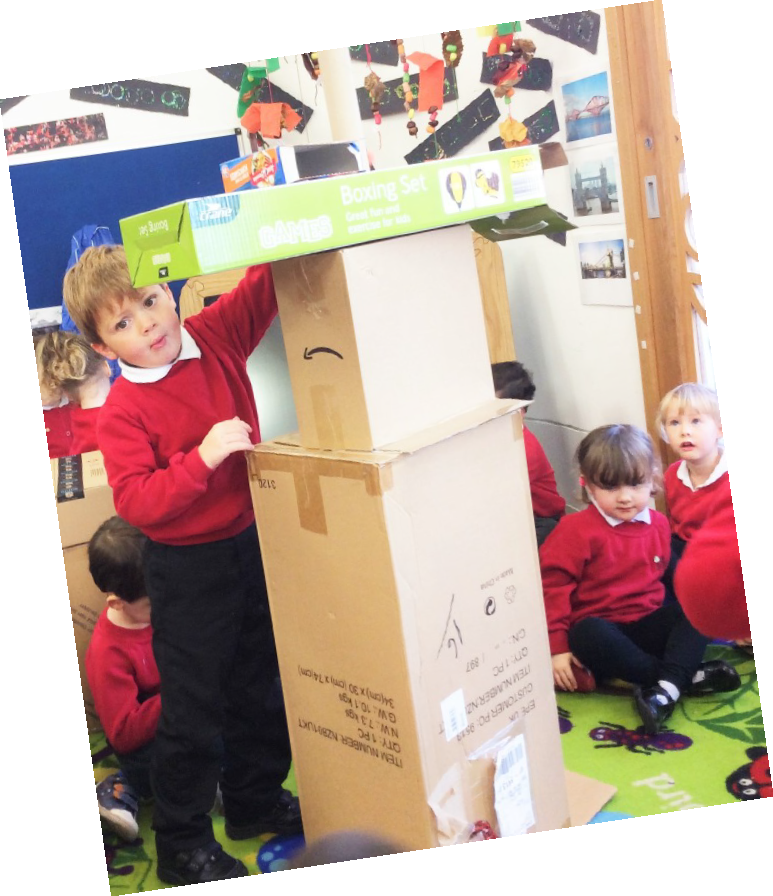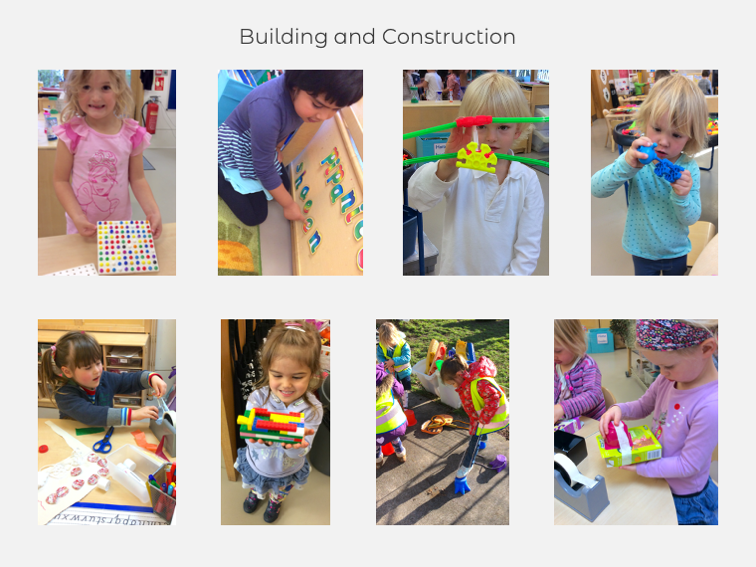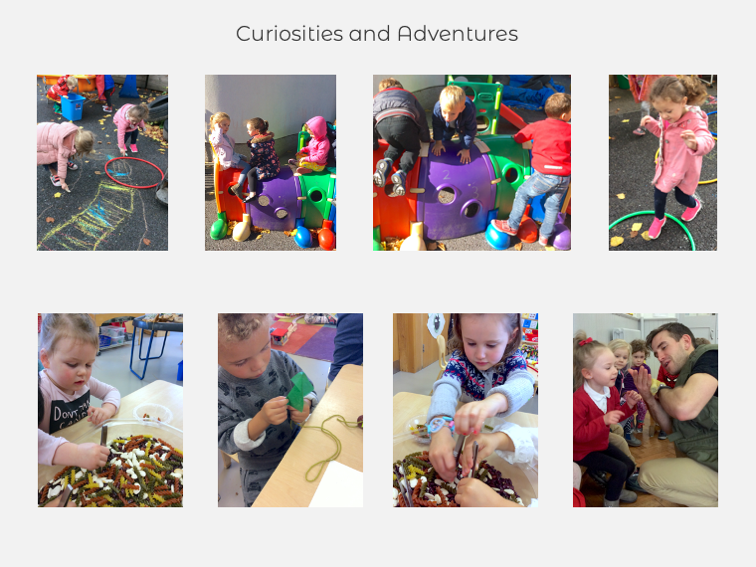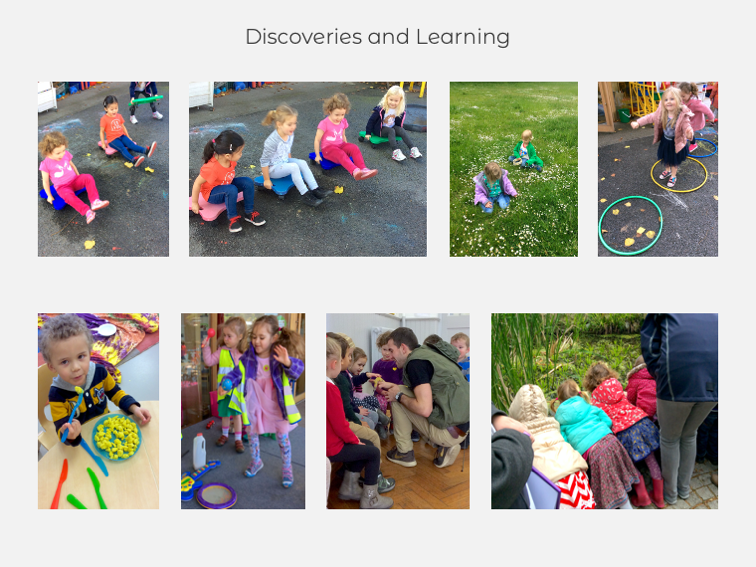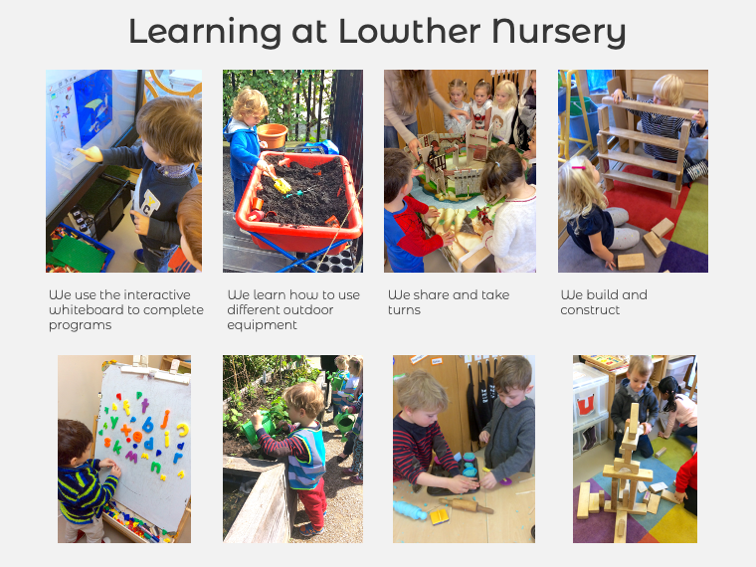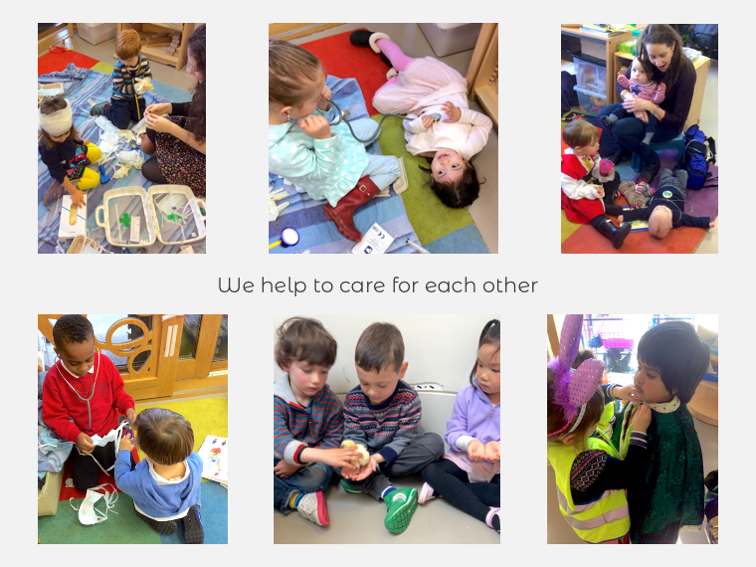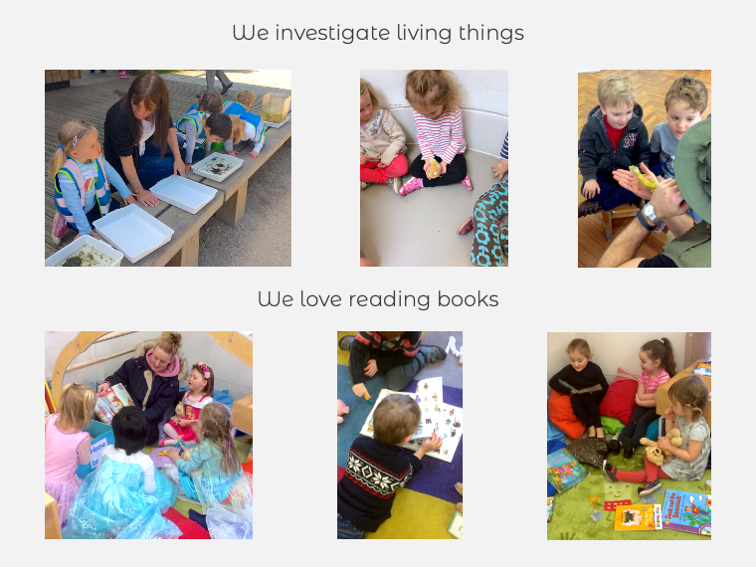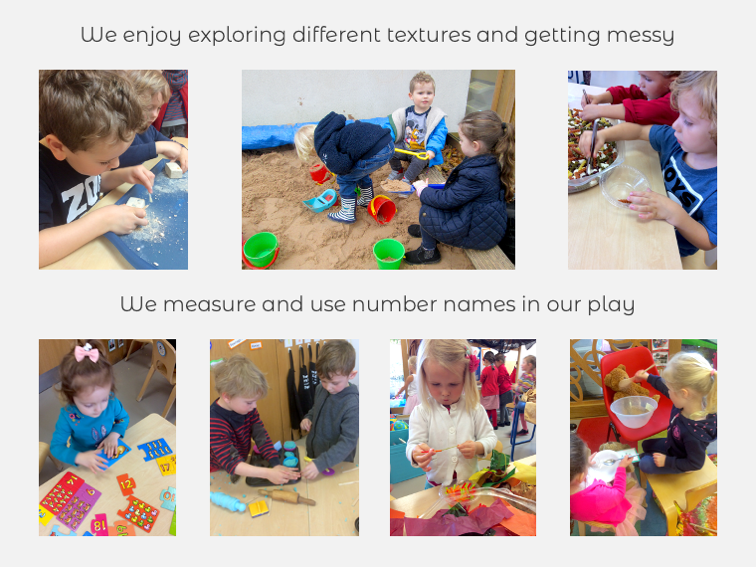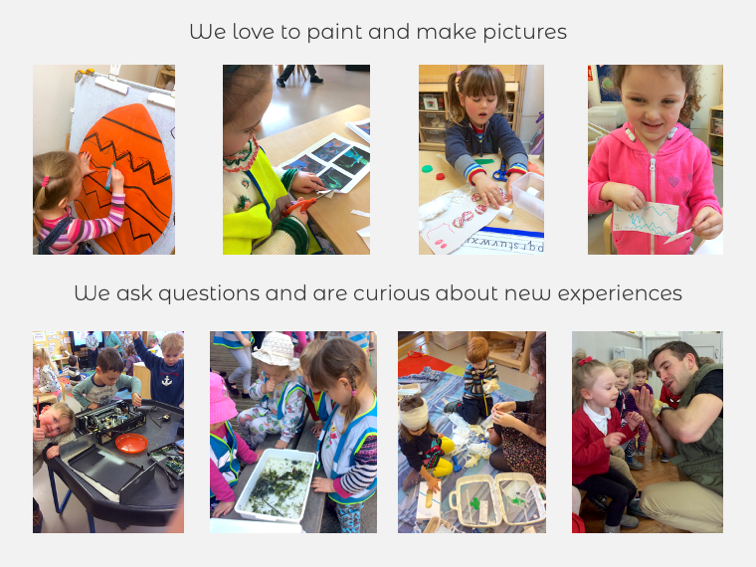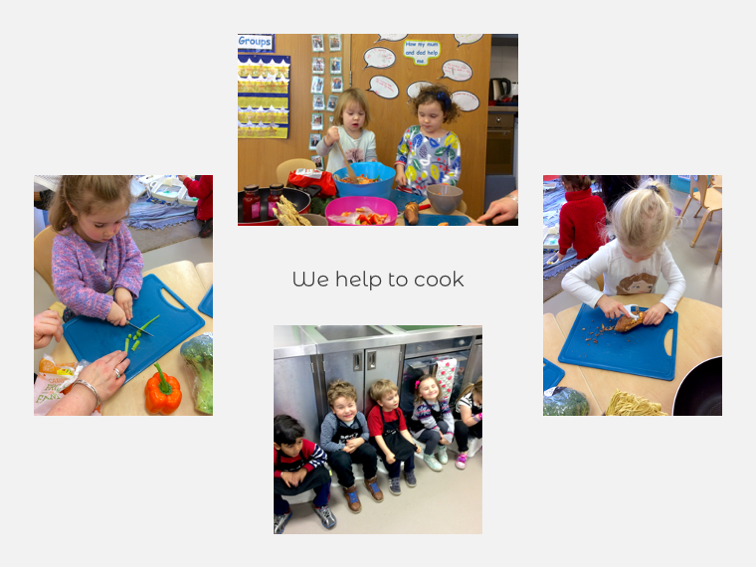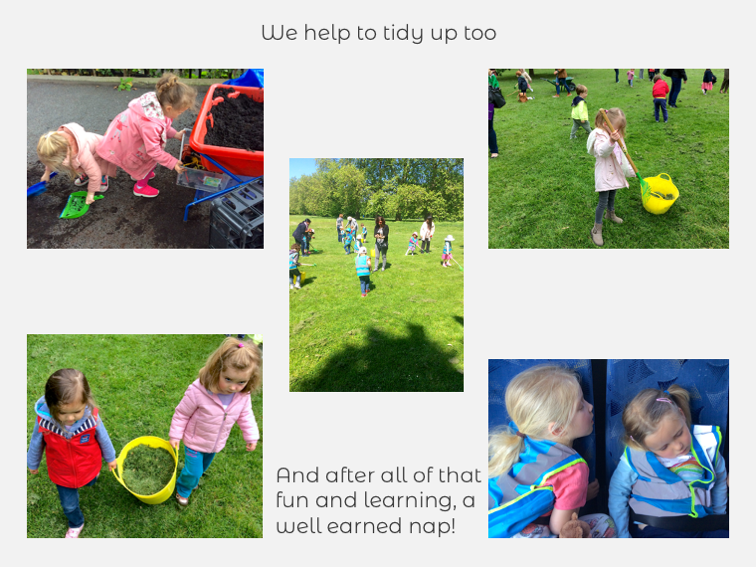
|
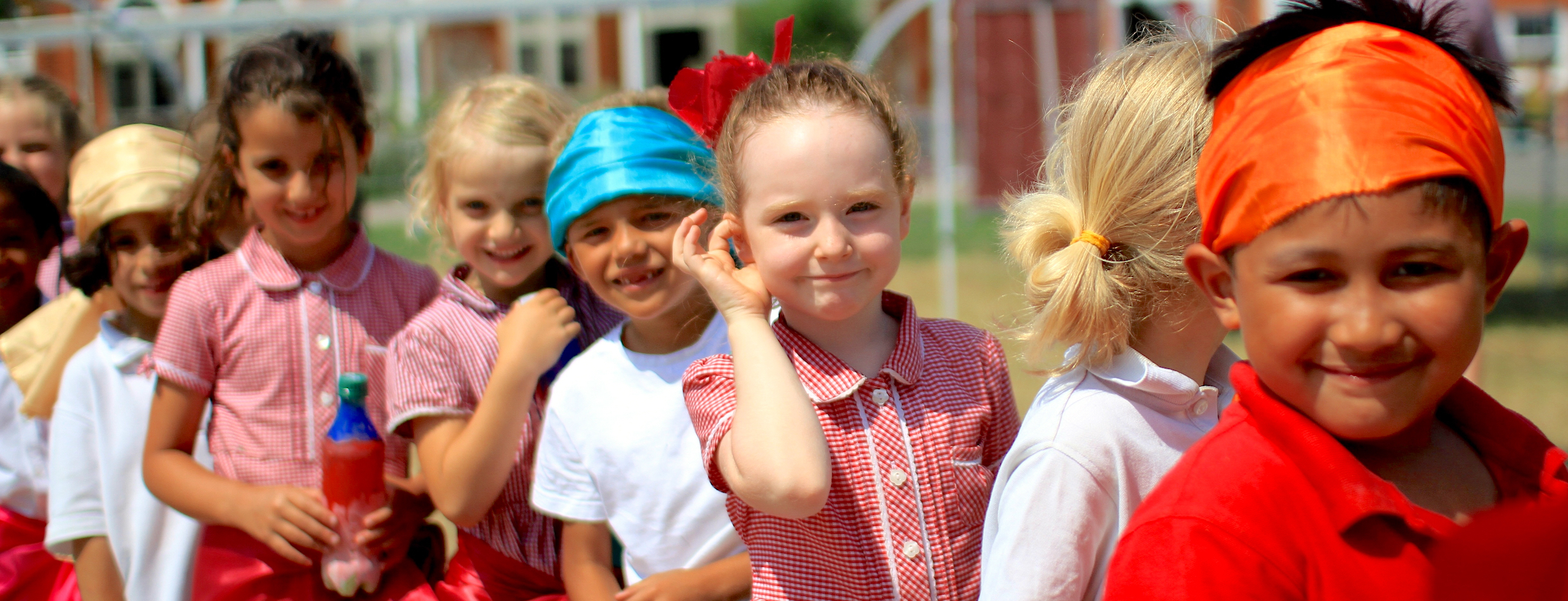 |
|
|
Welcome to life in Nursery at Lowther from Mrs Murphy and her team of learners |
|
Please see below for some examples of the amazing work we've been doing |
| Curriculum PDF |
|
|
|
|
|
During these last few weeks of May the Nursery children have been learning a lot about life cycles. We have been really lucky to have live tadpoles and caterpillars which have now changed into beautiful butterflies. Our of our pupils asked "Mrs Murphy, did you know that butterflies only see purple flowers?" What a fantastic piece of knowledge. We are going to be letting the butterflies go out to live in the wild. We have completed lots of super observational drawings of the caterpillars, the chrysalises and the butterflies. The children have enjoyed doing the sequence for the tadpoles and are eagerly waiting for them to start growing their legs and turning into cute froglets. The Nursery chefs have been extremely busy making yummy cheese scones this half term. Lots of weighing, rubbing in of the ingredients and dividing the dough into 2 pieces for their own scones to take home. Our families certainly had a real treat there! We love to cook, it's great fun and it also gives us the chance to use fantastic Maths language too!
Our book recommendation for children and parents this time is 'Creepy Crawly Calypso' written by Tony Langham. This is available with a singalong CD. You can also access it on YouTube at https://www.youtube.com/watch?v=kKClvjPCgUI |
|
|
The Nursery children have enjoyed doing some planting in the new troughs in our garden. We have planted runner beans (we are hoping that a Giant doesn't climb down to see us!), potatoes and some sweet pea flowers too. We also planted some strawberry plants which we were given by some of our parents who have an allotment. We are most certainly looking forward to eating them. We had great fun doing some PE outside which included jumping on a piece of bubble wrap paper to see if we could burst the bubbles. The children really got jumping and popping! We did lots of writing in our outside learning area. Some of the children also enjoyed playing with the water now that the weather has improved. There was lots of fantastic working together to throw a ball through a hoop. Good Shot! We’re all looking forward to our last term together in Nursery before many of us move up in to Reception class. Pictured below is one of our super pupils enjoying reading a story to a group of friends on the carpet. What fun!
|
|
|
In the Nursery we have been busy learning about lots of different things. We finished our topic about 'People Who Help Us' by having a Fire station in our role play area. The Nursery children spent some time talking about Chinese New Year as this was especially relevant to 2 children in the morning Nursery group. James and Lyra stood up in front of their friends and explained about 'cleaning all the rooms in the house. This gets rid of all the old germs and dirt ready for the New Year'. "We will have new clothes and some will be red because that is an important colour for us. We are going to have some special food". The children in Nursery helped to make some stir fried vegetables with noodles in a sauce. We watched some Dragon Dancing and were surprised how easily the Dragons dance up in the air on posts! We did some Dragon Dancing of our own using a scarf to dance under. The children in Nursery helped to make some stir fried vegetables with noodles in a sauce. We watched some Dragon Dancing and were surprised how easily the Dragons dance up in the air on posts! We did some Dragon Dancing of our own using a scarf to dance under. We are still learning about rhyming and have enjoyed reading 'Green Eggs and Ham' by Dr Seuss. Martha bought her copy into the Nursery for us to read. |
|
|
The children in our Nursery have been learning about ice and what happens when you put it outside and inside. There has been some great language with words such as 'melted, disappeared and dissolved' being used. The children made some great scientific predictions. We are starting to learn about 'People Who Help Us'. Everyone has been encouraged to help make their own lunch with some great results. We are still practicing listening to stories and singing along to Mrs Blaxland playing her Ukulele. The physical activities have been fun with everyone enjoying 'Cosmic Yoga'. We love sharing our recommendations and a great book to read is - 'While We Can't Hug' it’s a Hedgehog and Tortoise story. Authors Eoin McLaughlin and Polly Dunbar. In addition a useful story website you may be interested in is called 'Oxbridge stories'. Here’s an example https://www.youtube.com/results?search_query=oxbridge+stories We’ve been busy doing other activities too—such as going on exciting scavenger hunts in the Nursery and at home. We have found lots of objects that are different shapes, different colours, food we eat and clothes we wear when it's cold. We have drawn and decorated some heart shapes to put in our windows to make people smile when they see them. A huge thank you from the Nursery team for all the work parents are doing. It's great to be able to see what the children are doing at home. Everyone (parents included) are working so hard! |
|
|
The children have been busy making a lovely range of decorations to take home. The Nursery looks very sparkly and so do the children on occasions! Everyone practised very hard for the singing to parents which we hope everyone enjoys watching. The children did a brilliant job learning the words and actions and performing the songs so well. We also really enjoyed being able to perform "live" for you on Zoom. Weren't the children fantastic?! We have a couple of book recommendations this month. Check out Ollie's christmas Reindeer by Nicola Killen, this is an imaginative story for children to enjoy. Also worth reading is Little Owl and the Star by Mary Murphy. A lovely simple Nativity story. Happy Christmas from all of the Nursery!
|
|
|
The children in our Nursery hove been busy playing with the ‘Clean Mud’ which is great for developing those fine motor skills. Our pupil pictured reported “It’s squishy and cold”. There’s always lots of different opportunities to build things from different materials. The other picture here shows one of our pupils busily building a giant robot from boxes. We’ve also enjoyed seeing the children taking full advantage of our newly remodelled outside learning space. Our book suggestion for you this month is ‘Oliver’s Vegetables’. We had lots of fun reading this and then tasting some of the vegetables. We learnt about where our vegetables grow and what you can make with them. We also made vegetable soup from some butternut squash that we picked from the school allotment. We all tasted the soup, it was yummy! |
|
| (A little something different) |
|
|
Each year group has prepared a performance for you and recorded it. We hope you enjoy watching our Harvest Assembly. You can also watch the full (All year groups) version here. |
|
The Early Years Foundation Stage (Nursery and Reception classes) at Lowther has an exciting and creative curriculum. To find out more about life in Early Years at Lowther and our curriculum offer please follow these links: |
|
Here you will find some helpful calculation guides for early years through to year 6 for maths learning and practice. Please click on the images to display/download the full documents in PDF Format. |
|
Phonics is one part of how we teach children to read at Lowther. Here at Lowther we follow Letters and Sounds from the Government guidelines of teaching phonics. This is six phases of learning which runs from Nursery into Year 2. Phase One of Letters and Sounds concentrates on developing children's speaking and listening skills and lays the foundations for the phonic work which starts in Phase 2 at the beginning of reception. The emphasis during Phase 1 is to get children attuned to the sounds around them and ready to begin developing oral blending and segmenting skills. It is intended that each of the first six aspects should be dipped into, rather than going through them in any order, with a balance of activities. Aspect 7 will usually come later, when children have had plenty of opportunity to develop their sound discrimination skills. |
Aspect 1 - General sound discrimination - environmental |
|
The aim of this aspect is to raise children's awareness of the sounds around them and to develop their listening skills. Activities suggested in the guidance include going on a listening walk, drumming on different items outside and comparing the sounds, playing a sounds lotto game and making shakers. |
|
This aspect aims to develop children's awareness of sounds made by various instruments and noise makers. Activities include comparing and matching sound makers, playing instruments alongside a story and making loud and quiet sounds. |
|
The aim of this aspect is to develop children's awareness of sounds and rhythms. Activities include singing songs and action rhymes, listening to music and developing a sounds vocabulary. |
|
This aspect aims to develop children's appreciation and experiences of rhythm and rhyme in speech. Activities include rhyming stories, rhyming bingo, clapping out the syllables in words and odd one out. |
|
The focus is on initial sounds of words, with activities including I-Spy type games and matching objects which begin with the same sound. |
|
The aim is to distinguish between different vocal sounds and to begin oral blending and segmenting. Activities include Metal Mike, where children feed pictures of objects into a toy robot's mouth and the teacher sounds out the name of the object in a robot voice - /c/-/u/-/p/ cup, with the children joining in. |
|
In this aspect, the main aim is to develop oral blending and segmenting skills. To practise oral blending, the teacher could say some sounds, such as /c/-/u/-/p/ and see whether the children can pick out a cup from a group of objects. For segmenting practise, the teacher could hold up an object such as a sock and ask the children which sounds they can hear in the word sock. The activities introduced in Phase 1 are intended to continue throughout the following phases, as lots of practice is needed before children will become confident in their phonic knowledge and skills. |
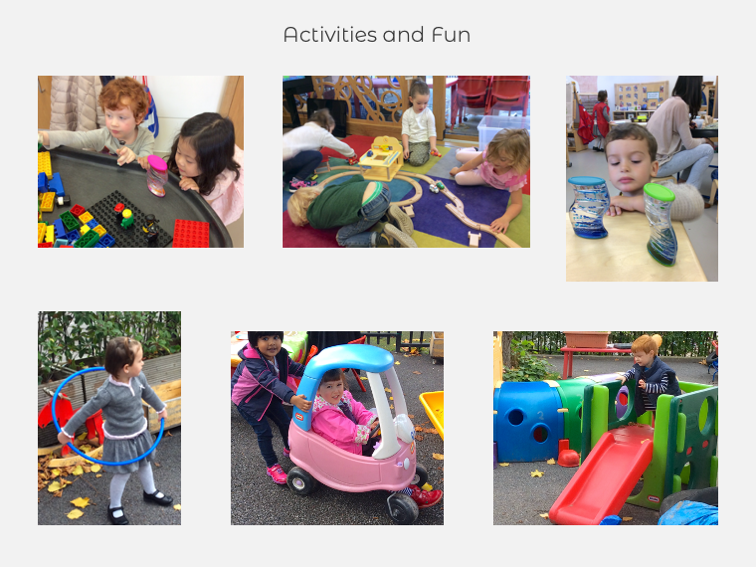
|
||
|
 |
